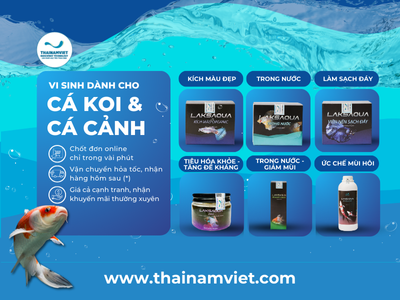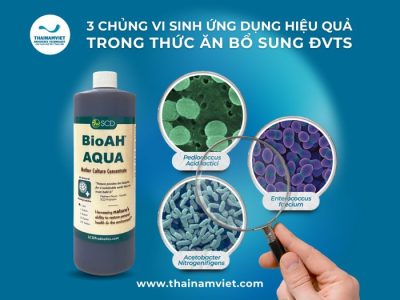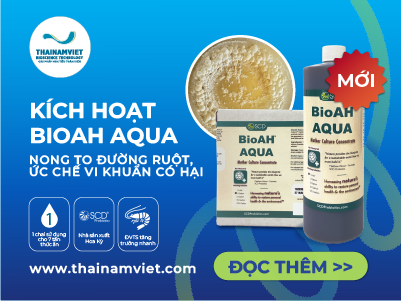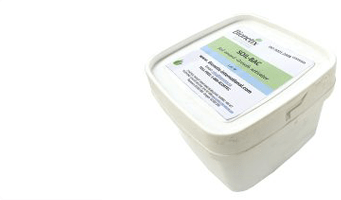Thái Nam Việt – Trang chủ
Thái Nam Việt2024-06-25T08:27:24+00:00GIAO HÀNG NHANH CHÓNG
Giao hàng nhanh chóng trên toàn quốc
CHẤT LƯỢNG ĐƯỢC ĐẢM BẢO
Cam kết chất lượng sản phẩm tốt nhất thị trường
BẢO MẬT THÔNG TIN
Cam kết thông tin được bảo mật và an toàn
HỖ TRỢ 24/7
Hãy liên hệ với chúng tôi qua hotline 091.686.5938 để được tư vấn
CÔNG TY TNHH CÔNG NGHỆ KỸ THUẬT SINH HÓA THÁI NAM VIỆT
SẢN PHẨM KHUYẾN MÃI
TIN TỨC

Vi sinh Bố Mẹ BioAH Aqua về hàng tại Thái Nam Việt
BioAH Aqua là vi sinh dạng bố mẹ mới chuyên dùng cho ăn, giúp tăng cường sức khỏe và tối ưu hóa sự phát triển của các loại thủy sản...
Read More
THÁI NAM VIỆT KHAI TRƯƠNG CỬA HÀNG SHOPEE – MUA NGAY VI SINH LAKSAQUA DÀNH CHO CÁ KOI VÀ CÁ CẢNH


 MỪNG TẾT BỘI THU, NHẬN QUÀ RỦNG RỈNH – Nhận sản phẩm dinh dưỡng nhập khẩu khi mua bất kỳ đơn hàng từ Thái Nam Việt!
MỪNG TẾT BỘI THU, NHẬN QUÀ RỦNG RỈNH – Nhận sản phẩm dinh dưỡng nhập khẩu khi mua bất kỳ đơn hàng từ Thái Nam Việt!
Hết Tết vẫn có lì xì khi đặt hàng từ Thái Nam Việt! Khi đặt hàng bất kỳ từ Thái Nam Việt trong 3 ngày 03 - 04 - 05.02.2025,...
Read More
3 CHỦNG VI SINH ỨNG DỤNG HIỆU QUẢ TRONG THỨC ĂN BỔ SUNG CHO ĐỘNG VẬT THỦY SẢN
Dù ít được nhắc đến trên thị trường Việt Nam, 3 chủng vi sinh Enterococcus Faecium, Pediococcus Acidilactici và Acetobacter Nitrogenifigens lại nắm vai trò quan trọng trong việc hỗ...
Read More
KÍCH HOẠT BIOAH AQUA – NONG TO ĐƯỜNG RUỘT, ỨC CHẾ VI KHUẨN CÓ HẠI
1 chai sử dụng cho 7 tấn thức ăn, BioAH Aqua tăng cường sức khỏe đường ruột cho động vật thủy sản và ức chế vi khuẩn hại, giữ môi...
Read More
Vi sinh Bố Mẹ BioAH Aqua về hàng tại Thái Nam Việt
BioAH Aqua là vi sinh dạng bố mẹ mới chuyên dùng cho ăn, giúp tăng cường sức khỏe và tối ưu hóa sự phát triển của các loại thủy sản...
Read More
THÁI NAM VIỆT KHAI TRƯƠNG CỬA HÀNG SHOPEE – MUA NGAY VI SINH LAKSAQUA DÀNH CHO CÁ KOI VÀ CÁ CẢNH


 MỪNG TẾT BỘI THU, NHẬN QUÀ RỦNG RỈNH – Nhận sản phẩm dinh dưỡng nhập khẩu khi mua bất kỳ đơn hàng từ Thái Nam Việt!
MỪNG TẾT BỘI THU, NHẬN QUÀ RỦNG RỈNH – Nhận sản phẩm dinh dưỡng nhập khẩu khi mua bất kỳ đơn hàng từ Thái Nam Việt!
Hết Tết vẫn có lì xì khi đặt hàng từ Thái Nam Việt! Khi đặt hàng bất kỳ từ Thái Nam Việt trong 3 ngày 03 - 04 - 05.02.2025,...
Read More
3 CHỦNG VI SINH ỨNG DỤNG HIỆU QUẢ TRONG THỨC ĂN BỔ SUNG CHO ĐỘNG VẬT THỦY SẢN
Dù ít được nhắc đến trên thị trường Việt Nam, 3 chủng vi sinh Enterococcus Faecium, Pediococcus Acidilactici và Acetobacter Nitrogenifigens lại nắm vai trò quan trọng trong việc hỗ...
Read More
KÍCH HOẠT BIOAH AQUA – NONG TO ĐƯỜNG RUỘT, ỨC CHẾ VI KHUẨN CÓ HẠI
1 chai sử dụng cho 7 tấn thức ăn, BioAH Aqua tăng cường sức khỏe đường ruột cho động vật thủy sản và ức chế vi khuẩn hại, giữ môi...
Read More
Vi sinh Bố Mẹ BioAH Aqua về hàng tại Thái Nam Việt
BioAH Aqua là vi sinh dạng bố mẹ mới chuyên dùng cho ăn, giúp tăng cường sức khỏe và tối ưu hóa sự phát triển của các loại thủy sản...
Read More













